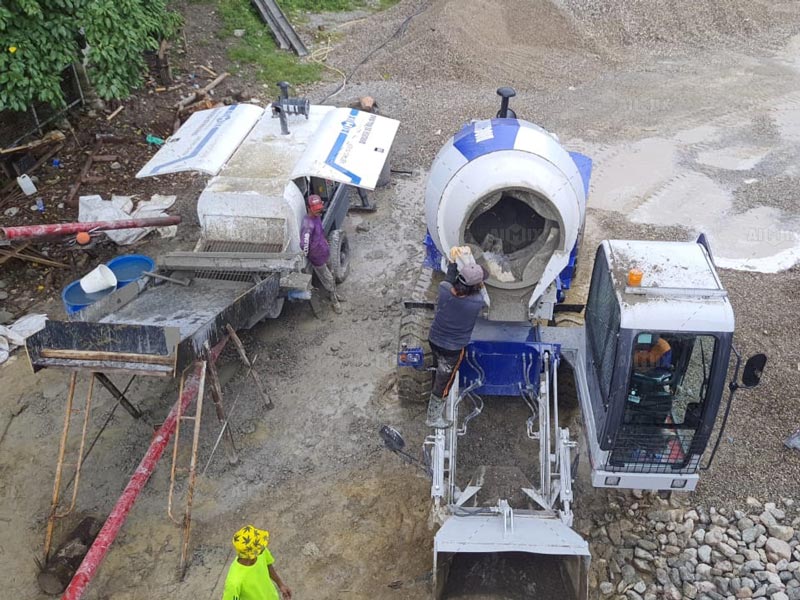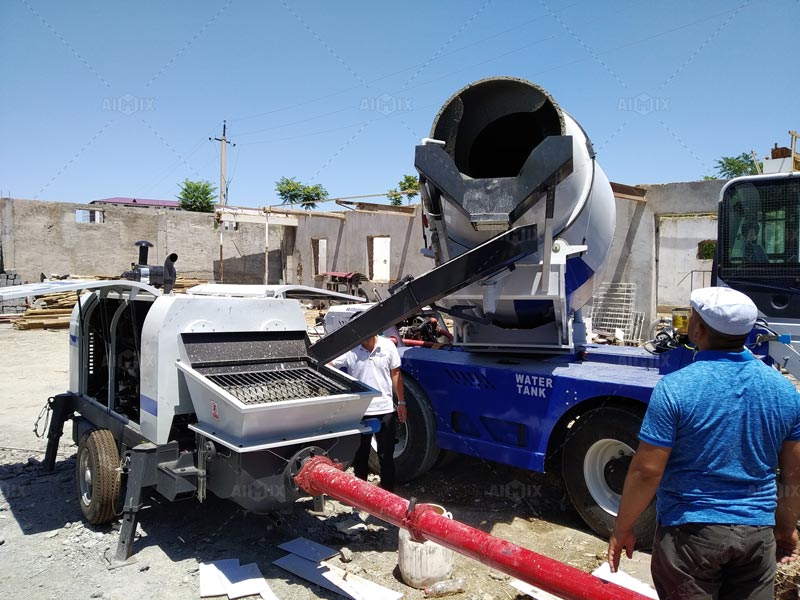In the construction industry, the choice of concrete mixers can significantly impact efficiency, productivity, and overall project success. Among the various types of mixers available, self-loading concrete mixers have gained immense popularity due to their innovative features and operational advantages. This article aims to compare self-loading concrete mixers(autohormigonera Perú) with traditional mixers, highlighting their respective benefits and drawbacks to help you make an informed decision for your construction projects.

Understanding Self-Loading Concrete Mixers
Self-loading concrete mixers are advanced machines designed to automate the mixing process. They combine the functions of a concrete mixer and a loader, allowing for efficient mixing and transportation of concrete on-site. These mixers are equipped with a loading bucket that can collect raw materials, including aggregates, cement, and water, and then mix them to create concrete in a single operation. This capability streamlines the construction process, making it faster and more efficient.
Key Features of Self-Loading Mixers
- Automatic Loading: The self-loading mixer(hormigonera autocargable) can load its own materials, reducing the need for additional machinery and manual labor.
- On-Site Mixing: Concrete is mixed directly at the construction site, ensuring freshness and quality, which is crucial for structural integrity.
- High Mobility: With wheels and a compact design, these mixers can navigate tight spaces and rough terrain easily, making them ideal for various job sites.
- Versatility: They can handle various types of concrete mixes, making them suitable for diverse projects, from residential buildings to large infrastructure projects.
Traditional Concrete Mixers
Traditional concrete mixers, often referred to as batch mixers, are standard equipment in the construction industry. They come in various sizes and configurations, from small portable mixers to large stationary units. Traditional mixers usually require manual loading of materials and may involve multiple steps in the mixing process, which can affect efficiency and consistency.
Key Features of Traditional Mixers
- Manual Loading: Operators must load materials manually or with the help of another piece of machinery, increasing labor requirements.
- Batch Mixing: Concrete is mixed in batches, which can lead to inconsistencies if not managed properly and requires careful monitoring.
- Lower Initial Cost: Traditional mixers are generally less expensive to purchase than self-loading models, making them accessible for smaller projects.
- Variety of Models: They come in various sizes and configurations, catering to different project requirements and capacities.

Comparative Analysis
1. Efficiency
Self-loading concrete mixers are designed for maximum efficiency. Their ability to load, mix, and transport concrete in one operation saves time and labor costs. In contrast, traditional mixers require multiple steps, which can slow down the overall process. For example, a self-loading mixer(AIMIX autohormigonera Chile la venta) can produce concrete in less than half the time it takes a traditional mixer to perform the same tasks. This difference in operational efficiency can lead to significant time savings on construction sites, allowing projects to stay on schedule.
2. Labor Requirements
Self-loading mixers reduce the need for additional labor, as one operator can manage the entire mixing process. This not only cuts labor costs but also simplifies project management. Traditional mixers, on the other hand, often require multiple workers to handle loading, mixing, and transporting concrete, increasing labor costs and management complexity. In a tight labor market, this can be a critical factor for many construction companies.
3. Quality Control
With self-loading concrete mixers, the mixing occurs on-site, ensuring that the concrete is fresh and consistent. This feature helps maintain the desired quality and performance of the concrete, which is essential for safety and durability in construction. Traditional mixers may struggle with consistency, especially if materials are not properly loaded or mixed in batches, leading to potential quality issues that can affect the entire project.
4. Mobility and Versatility
Self-loading mixers are built for mobility, making them ideal for projects in challenging terrains or tight spaces. They can easily navigate construction sites without the need for additional equipment, such as cranes or forklifts. Traditional mixers may require more space and may not be as adaptable to various site conditions, which can limit their usability in certain scenarios. The versatility of self-loading mixers makes them suitable for a wide range of applications, including road construction, building foundations, and more.
5. Cost Considerations
While self-loading concrete mixers offer numerous benefits, they typically come with a higher initial investment compared to traditional mixers. However, the long-term savings in labor costs, time efficiency, and quality control often outweigh the upfront expense. For businesses focused on maximizing productivity and minimizing downtime, the self-loading mixer can be a worthwhile investment. Moreover, with their increasing popularity, many manufacturers such as AIMIX Group(fabricantes como AIMIX Group) are offering competitive pricing, making them more accessible to a wider range of buyers.
Conclusion
When choosing between self-loading concrete mixers and traditional mixers, it’s essential to consider your specific project requirements, budget, and operational preferences. Self-loading mixers provide significant advantages in terms of efficiency, labor savings, and quality control, making them an excellent choice for many construction projects. However, traditional mixers remain a viable option, especially for smaller projects or businesses with budget constraints. Ultimately, the decision should align with your operational goals and project demands. As technology continues to advance, the integration of features in both types of mixers will likely evolve, making ongoing research and consideration necessary for optimal equipment selection in the construction industry.